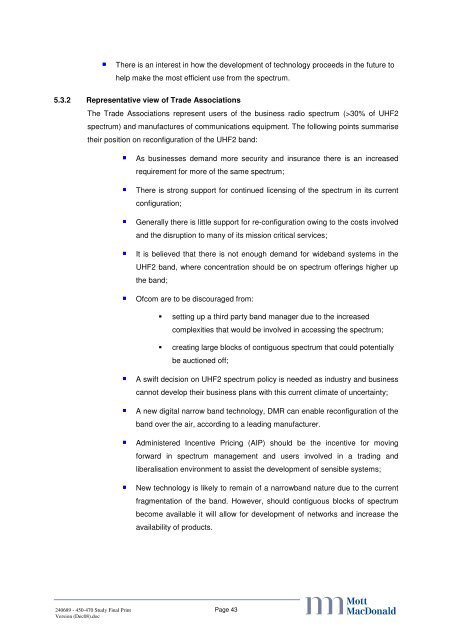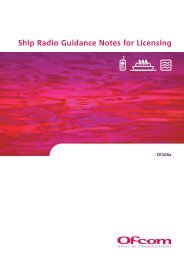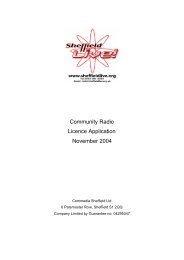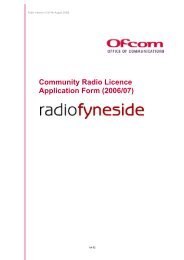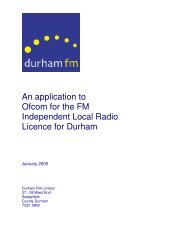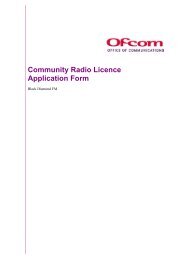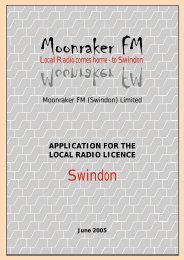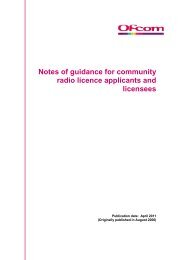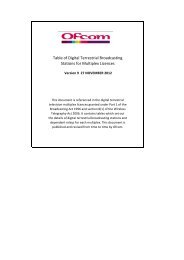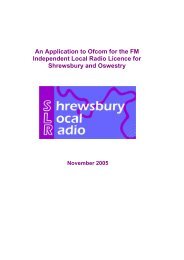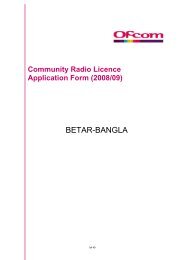UHF2 realignment study - Ofcom Licensing
UHF2 realignment study - Ofcom Licensing
UHF2 realignment study - Ofcom Licensing
Create successful ePaper yourself
Turn your PDF publications into a flip-book with our unique Google optimized e-Paper software.
240689 - 450-470 Study Final Print<br />
Version (Dec08).doc<br />
There is an interest in how the development of technology proceeds in the future to<br />
help make the most efficient use from the spectrum.<br />
5.3.2 Representative view of Trade Associations<br />
The Trade Associations represent users of the business radio spectrum (>30% of <strong>UHF2</strong><br />
spectrum) and manufactures of communications equipment. The following points summarise<br />
their position on reconfiguration of the <strong>UHF2</strong> band:<br />
As businesses demand more security and insurance there is an increased<br />
requirement for more of the same spectrum;<br />
There is strong support for continued licensing of the spectrum in its current<br />
configuration;<br />
Generally there is little support for re-configuration owing to the costs involved<br />
and the disruption to many of its mission critical services;<br />
It is believed that there is not enough demand for wideband systems in the<br />
<strong>UHF2</strong> band, where concentration should be on spectrum offerings higher up<br />
the band;<br />
<strong>Ofcom</strong> are to be discouraged from:<br />
setting up a third party band manager due to the increased<br />
complexities that would be involved in accessing the spectrum;<br />
creating large blocks of contiguous spectrum that could potentially<br />
be auctioned off;<br />
A swift decision on <strong>UHF2</strong> spectrum policy is needed as industry and business<br />
cannot develop their business plans with this current climate of uncertainty;<br />
A new digital narrow band technology, DMR can enable reconfiguration of the<br />
band over the air, according to a leading manufacturer.<br />
Administered Incentive Pricing (AIP) should be the incentive for moving<br />
forward in spectrum management and users involved in a trading and<br />
liberalisation environment to assist the development of sensible systems;<br />
New technology is likely to remain of a narrowband nature due to the current<br />
fragmentation of the band. However, should contiguous blocks of spectrum<br />
become available it will allow for development of networks and increase the<br />
availability of products.<br />
Page 43<br />
abc


